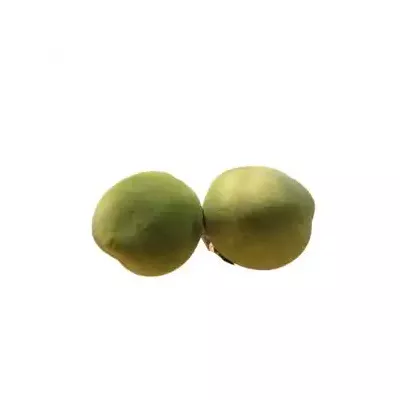



The white sapote is an exotic fruit native to Central Mexico. Apart from its delicious fruit, it is also grown as an ornamental tree for landscaping purposes. Its broad, leafy crown is aesthetically pleasing. It is largely devoid of pest problems. It can grow in full sun to partial shade conditions.

Pay using UPI, Card or Netbanking

Shipping within 3 working days
White Sapote, or Casimiroa edulis, is a beloved fruit tree that produces soft, juicy fruits with creamy flesh that look like apples. Contrary to its name, it is not a member of the Sapotaceae family but belongs to the citrus family.
The white sapote plant is largely disease-free. It may be grown as an ornamental indoor plant in large containers. However, in this condition, fruiting may not happen.
The fruit of this tree ranges in colour from yellow to green and is round or oblate in shape with a thin skin covering some gritty particles inside. It has an enjoyable flavour with subtle hints of lemon and can be consumed fresh or frozen.
The fruit peel colour varies from greenish-yellow to golden yellow. The inside flesh is whitish in colour and sweet in taste. A fully grown tree produces more than a hundred kilograms of fruit annually.
Seedlings start bearing fruit in 7–8 years. White Sapote has multiple fruiting seasons in a year. A single fruit could weigh as much as 700 grams, but is often much smaller.
White Sapote ripen into juicy, soft and tasty treats with a mild sweetness. They can be enjoyed straight from the tree as is, made into jams and jellies, or preserved in oil for long-lasting freshness.
Fruits can be enjoyed sliced and consumed, frozen, or pressed for juice. Pressing the fruit releases its pleasant, slightly acidic, apricot-like flavour.
White sapote is grown in the tropical and subtropical regions of the world.
For optimal fruit cultivation, the white sapote plants should be grown in full sun on moist, rich soil with a pH between 5.5 and 7.5. However, it will thrive in most soil types provided that it's well drained.
Ideal soil should be rich in humus and organic matter, well-drained but not excessively, free of weeds, and with adequate moisture. Furthermore, providing enough fertilizer at regular intervals, particularly during the fruiting season, will be beneficial.
This slow-growing ornamental tree can reach heights of 20–30 feet and widths equally as impressive. It thrives in both poor soils and sun or shade conditions alike.
Do not consume White sapote seeds as they are toxic.
Data sheet